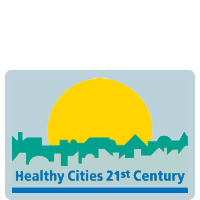- Ensure planning applications for new developments always prioritise the need for people to be physically active as a routine part of their daily life
- Provide daily services and facilities within walking distance of where people live
- Provide well-lit and pedestrian-friendly footpaths and socially enhancing street patterns
- Provide green spaces and play areas that stimulate children and safely challenge them
- Provide well maintained, distinctive, attractive and safe-feeling public spaces and routes (for all)
- Implement traffic measures that reduce speeds or divert traffic away from busy streets and spread the flow more evenly across built-up areas
- Implement traffic calming measures in busy residential streets such as 20mph zones
Sources: Promoting Walking and Cycling (NICE, 2013); Preventing Obesity (NICE, 2013); The Built Environment and Health: an evidence review (GCPH, 2013)
Examples of adopted policies
Hertsmere Core Strategy
- Promote recreational access to open spaces and the countryside and promote greenways – a largely car-free network of paths within and between urban destinations and the countryside
Newham Core Strategy
- Facilitate and promote walking and cycling to increase people's activity rates
Stockport Core Strategy
- A focus on facilitating cycle-friendly neighbourhoods.
- Layout of new developments should favour more ‘people-friendly’ streets and reduced vehicle speeds
More information, and examples
Active planning toolkit (Gloucestershire Conference, 2011)
Obesity and the environment: increasing physical activity and active travel (PHE, 2013)
Walking works (The Ramblers and Macmillan Cancer Support, 2013)
Improving the health of Londoners: transport action plan (especially Chapter 8) (TFL, 2014)


